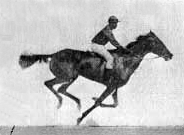Silent film
File:Battle of Chemulpo Bay edison.ogv
Silent film refers to a genre of film that was produced without synchronized recorded sound, particularly spoken dialogue. The silent film era spanned from the late 19th century to the early 1930s, marking the beginning of cinematic history. Silent films relied on visual imagery, including mime, acting, and title cards, to convey the story to the audience. This era is notable for its significant contributions to the art and technology of filmmaking, as well as for the development of the film industry.
History[edit | edit source]
The inception of silent films can be traced back to the late 1800s, with inventors like Thomas Edison and the Lumière brothers, Auguste and Louis Lumière, playing pivotal roles in the development of motion picture cameras and projectors. The first public screening of a film by the Lumière brothers in 1895 is often cited as the birth of cinema. During the silent film era, filmmakers developed the language of cinema, including editing techniques, narrative structures, and the use of close-ups and other camera angles to tell a story visually.
Characteristics[edit | edit source]
Silent films were not entirely silent; they were often accompanied by live music, sound effects, and sometimes even commentary, provided by a narrator. Music played a crucial role in setting the tone and enhancing the emotional impact of the film. Theaters would employ pianists, organists, or even full orchestras for larger productions. Title cards were used to convey dialogue and narrative information that could not be expressed through visuals alone.
Notable Filmmakers and Films[edit | edit source]
Several filmmakers and actors became iconic figures during the silent film era. Directors such as D.W. Griffith, with his epic The Birth of a Nation (1915), and Charlie Chaplin, known for his character "The Tramp," made significant contributions to the art of cinema. Other notable figures include Buster Keaton, F.W. Murnau, and Sergei Eisenstein, whose innovative techniques and storytelling methods are still studied and admired today.
Transition to Sound[edit | edit source]
The transition from silent to sound films began in the late 1920s with the advent of sound film technology. The Jazz Singer (1927) is widely regarded as the first major sound film that signaled the end of the silent era. The introduction of sound revolutionized the film industry, changing the way films were produced and experienced. While this transition was a significant technological advancement, it also led to the decline of many silent film stars who were unable to adapt to the new format.
Legacy[edit | edit source]
The silent film era laid the foundation for modern filmmaking, with many techniques and storytelling methods developed during this time still in use today. Silent films are celebrated for their artistic and historical value, with restoration efforts and film festivals dedicated to preserving and showcasing these early works of cinema. The era also highlights the universal language of visual storytelling, transcending the barriers of spoken language and illustrating the power of cinema to communicate complex emotions and narratives.
Navigation: Wellness - Encyclopedia - Health topics - Disease Index - Drugs - World Directory - Gray's Anatomy - Keto diet - Recipes
Search WikiMD
Ad.Tired of being Overweight? Try W8MD's physician weight loss program.
Semaglutide (Ozempic / Wegovy and Tirzepatide (Mounjaro / Zepbound) available.
Advertise on WikiMD
WikiMD is not a substitute for professional medical advice. See full disclaimer.
Credits:Most images are courtesy of Wikimedia commons, and templates Wikipedia, licensed under CC BY SA or similar.Contributors: Prab R. Tumpati, MD





